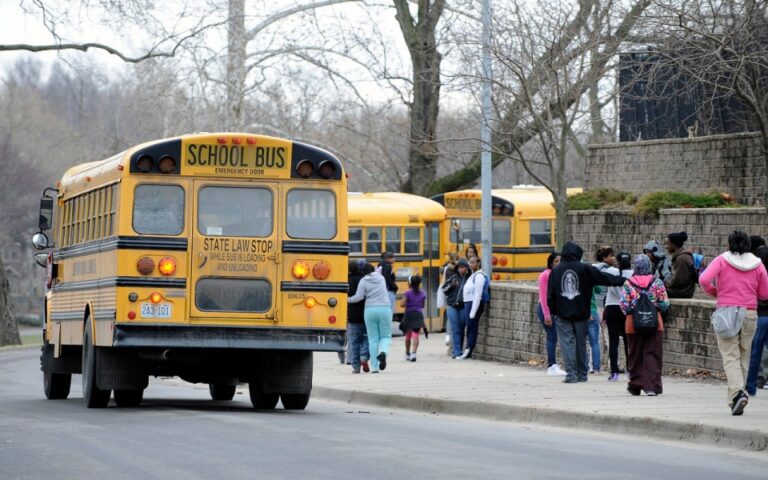Physical Address
304 North Cardinal St.
Dorchester Center, MA 02124
Physical Address
304 North Cardinal St.
Dorchester Center, MA 02124

Currently, the American public school system is a sprawl-generating machine: urban public schools are less appealing to middle-class parents than suburban public schools, causing parents to move to suburbia. This result arises from school assignment laws: because students must attend school in the municipality of their residence, residents of the most diverse municipalities (usually central cities) must attend diverse schools. By definition, diverse schools have lots of children from disadvantaged backgrounds. Because children from disadvantaged backgrounds often learn less rapidly than middle-class children, these schools quickly get a reputation as “bad” schools, causing middle-class parents to flee to suburban schools that are more socially homogenous. The common progressive answer to this problem is to fund urban schools more generously: this strategy has not, when tried, succeeded in bringing middle-class parents back to urban schools. For example, in 1990s Kansas City, federal courts forced government to fund urban schools far more generously than suburban schools: nevertheless, test scores barely budged and urban schools continued to lose middle-class and white parents. Even successful urban charter schools (such as New York’s Harlem Success Academy) have failed to bring back middle-class parents. A more market-oriented solution to the problem of sprawl-generating school systems is to break the link between residence and schooling, so that city residents would not be limited to urban neighborhood public schools. One possible option is some form of a voucher system. Under the purest form of a voucher system, parents who choose to avoid public schools would be given public funds to pay the cost of private schools. Under such a system, parents would have little reason to avoid city neighborhoods: they could stay in the city, and their children could attend private schools for the same amount of money that they would spend on public schools (that is, zero). Such voucher systems […]
I’ve been meaning to address the public education system’s complex role in land use patterns, and found that Murray Rothbard does a better job in his 1973 manifesto, For a New Liberty than I ever could. In summary, locally-funded public education is an engine of geographical segregation, which encourages flight from urban areas, and was a driving motivation for the popular acceptance of exclusionary zoning in newer suburbs. As a result, wealth is consistently concentrated geographically, and housing affordability is at odds with these restrictions of supply intended to exclude poorer people from draining the property tax base. Here’s a paragraph from the chapter on education: The geographical nature of the public school system has also led to a coerced pattern of residential segregation, in income and consequently in race, throughout the country and particularly in the suburbs. As everyone knows, the United States since World War II has seen an expansion of population, not in the inner central cities, but in the surrounding suburban areas. As new and younger families have moved to the suburbs, by far the largest and growing burden of local budgets has been to pay for the public schools, which have to accommodate a young population with a relatively high proportion of children per capita. These schools invariably have been financed from growing property taxation, which largely falls on the suburban residences. This means that the wealthier the suburban family, and the more expensive its home, the greater will be its tax contribution for the local school. Hence, as [p. 133] the burden of school taxes increases steadily, the suburbanites try desperately to encourage an inflow of wealthy residents and expensive homes, and to discourage an inflow of poorer citizens. There is, in short, a breakeven point of the price of a house beyond which a […]